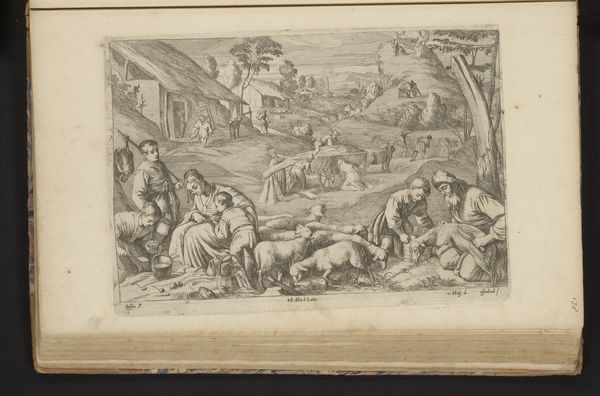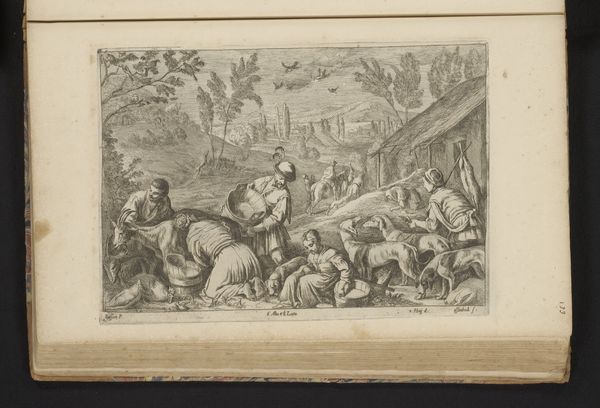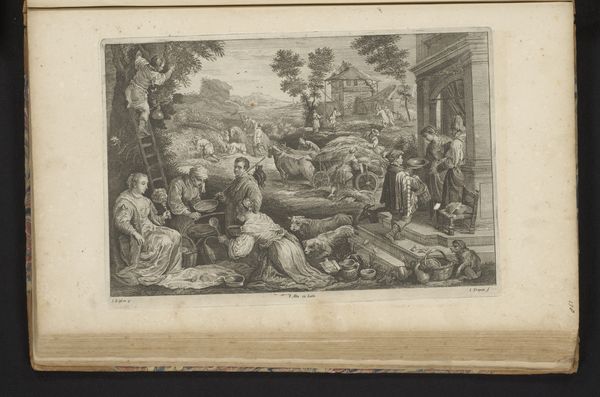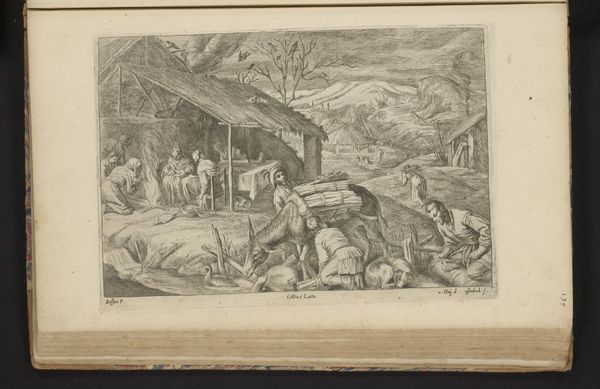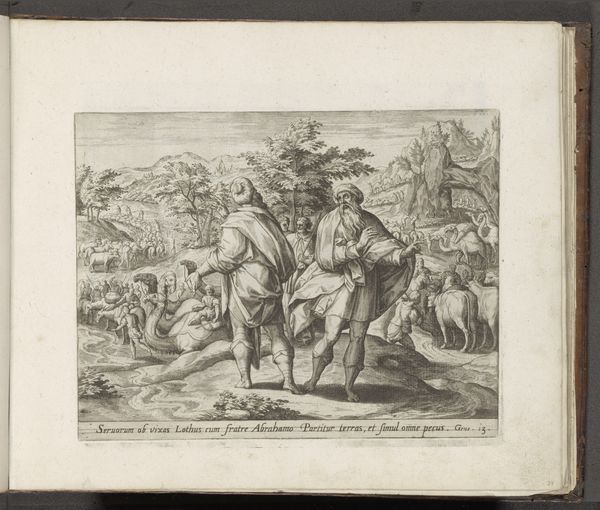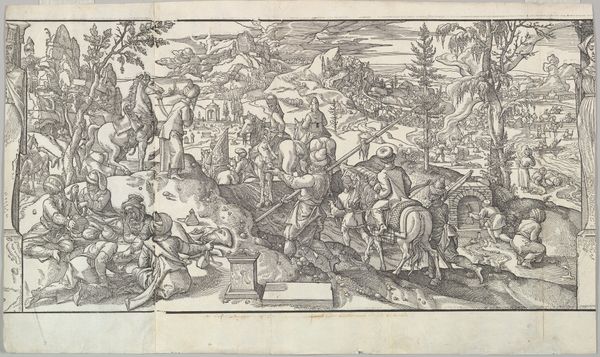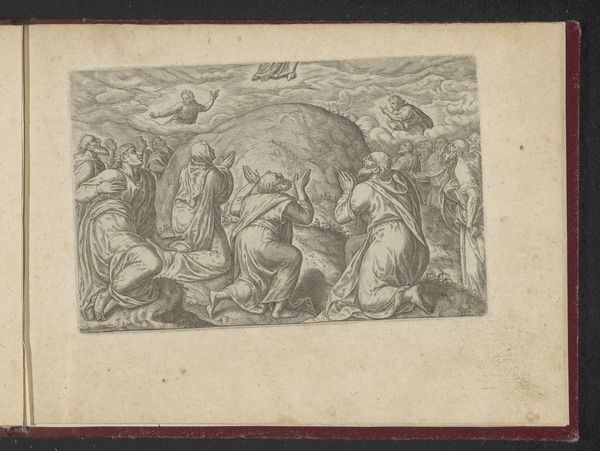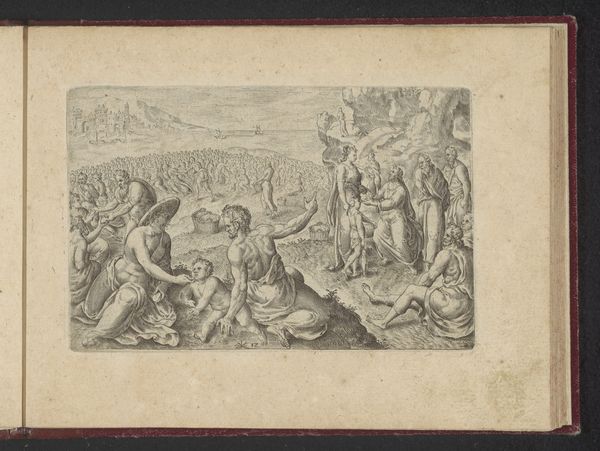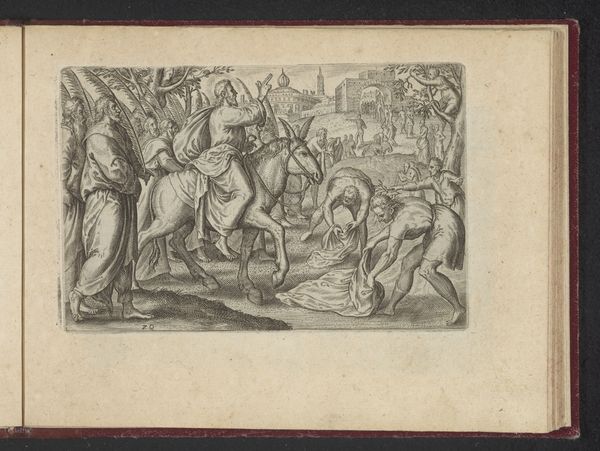
drawing, etching, ink
#
drawing
#
baroque
#
etching
#
landscape
#
figuration
#
ink
#
genre-painting
Dimensions: height 222 mm, width 306 mm
Copyright: Rijks Museum: Open Domain
Curator: We’re now looking at "Herfst", which translates to "Autumn," created around 1660 by Jan van Ossenbeeck. This artwork combines etching and ink in its creation, offering us a fascinating glimpse into Baroque landscape and genre painting. What strikes you first about this piece? Editor: It feels…busy, yet balanced. There’s a central activity that draws the eye, then a calming landscape opens up behind. The artist clearly has a sophisticated sense of spatial composition and narrative layering. Curator: Indeed. Ossenbeeck's choices regarding etching techniques are revealing; consider the variation in line weight. It guides the viewer through a hierarchy of social labor, doesn’t it? The labor of the figures dominates the composition; consider the range of occupations captured in this small frame. We observe figures engaged in what appears to be animal husbandry, with attention to tasks such as milking, tending livestock, and reaping the autumnal harvest from nearby fruit trees. This reveals 17th-century rural labor systems and their impact. Editor: Precisely. And beyond the documentation of labor, consider the interplay of light and shadow, or the figure poses; how they contribute to a complex emotional register. Ossenbeeck manipulates depth with exceptional precision. The formal structure conveys not just space, but perhaps the era’s prevailing aesthetic principles of order and perspective? Curator: And it speaks to consumption too; consider the artist was producing etchings and drawings as print media and that prints would have circulated across regions. These prints became crucial instruments for knowledge dissemination, shaping aesthetic views and creating visual repositories documenting society’s transformations through agriculture and technology. Editor: Good point. So, considering both material production and symbolic structure… this etching becomes quite rich in possibilities, doesn’t it? Ossenbeeck wasn't just representing labor, but constructing a lens to view 17th century life. Curator: A viewpoint that allows us to understand society by depicting its most important forms of output and productivity, certainly. Editor: It allows us to reflect on his masterful treatment of form and depth, a reminder of the inherent qualities of this important period of Dutch art.
Comments
No comments
Be the first to comment and join the conversation on the ultimate creative platform.
